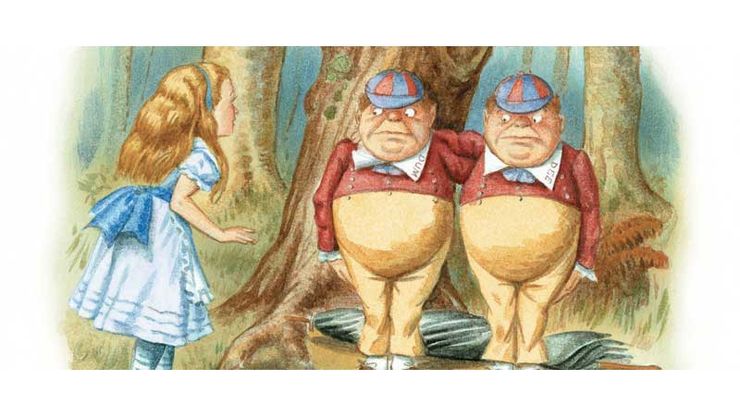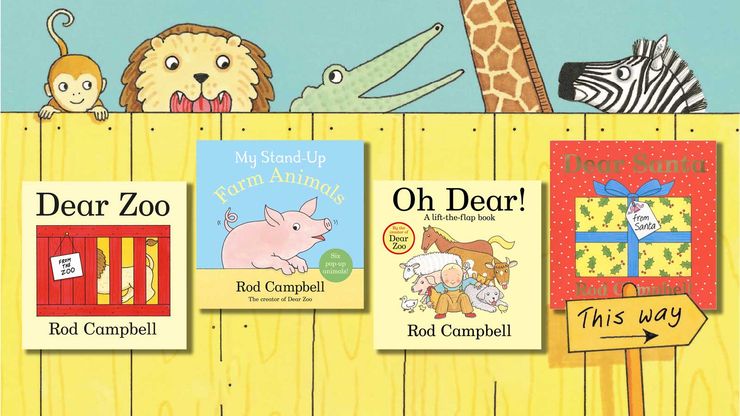Tweedledum and Tweedledee by Philip Ardagh
Lewis Carroll describes them as little men “looking so exactly like a couple of great [big] schoolboys.” Tenniel drew them as round as a pair of Christmas Puddings.

Through the Looking-Glass is the sequel to the wildly successful Alice’s Adventures in Wonderland, published seven years earlier in 1865. Some have argued that it lacks the freshness and spontaneity of the original but, then again, Wonderland was a hard act to follow. Had the author Lewis Carroll’s only adventure been Through the Looking-Glass, it would probably have been better appreciated for the comic masterpiece that it most certainly is.
The premise is a simple one. Alice finds herself up on the mantelpiece above the fireplace – not quite sure how she got there – and steps through the mirror (looking-glass) above it, which melts away like a silver mist. She finds herself in a mirror-image of the room she’s just left, except that, for example, the clock has a human face grinning back at her. Now, her further adventures begin.
Possibly one of the most famous sequences to come out of Through the Looking-Glass is not part of the actual action but a nonsense poem Alice finds written in back-to-front writing, requiring her to hold up a mirror to read. This is ‘Jabberwocky', and in it Carroll takes the use of nonsense words to a whole new level, never achieved before or since.
Alice’s meeting with Tweedledum and Tweedledee has also passed into British folklore, so much so that today people assume that they’re Carroll’s creation. In fact, they existed as characters in a much earlier – but generally forgotten – nursery song but, with the help of John Tenniel’s extraordinary illustrations, have become synonymous with Alice. Carroll describes them as little men “looking so exactly like a couple of great [big] schoolboys.” Tenniel drew them as round as a pair of Christmas Puddings.
Much of the action in Through the Looking-Glass surrounds the rivalry between the red and white queen on a giant chessboard in which Alice finds herself, both literally and metaphorically, a pawn. In the Victorian world of constraint and rules of etiquette, there was much one couldn’t do. As a child and a female, Alice has even fewer options in society, flagged up in this back-to-front world. Life, like chess, has its own set of rules where even a queen can be prisoner.
But, first and foremost, Through the Looking-Glass is a joyous piece of writing. Lewis Carroll was the pseudonym of Charles Lutwidge Dodgson (1832-1898), an eminent mathematician as Christ Church College, Oxford. He loved puzzles, trickery and wordplay and his sentences are as inventive, ingenious and subversive as the ridiculous plots as they unfold.
It’s Tweedledee who recites the now-infamous poem 'The Walrus and the Carpenter', the opening verse of which neatly sums up the back-to-front, upside-down, skewiff world Alice finds herself in:
The sun was shining on the sea,
Shining with all his might:
He did his very best to make
The billows smooth and bright –
And this was odd, because it was
The middle of the night.
Philip Ardagh, foreword of Through the Looking-Glass


